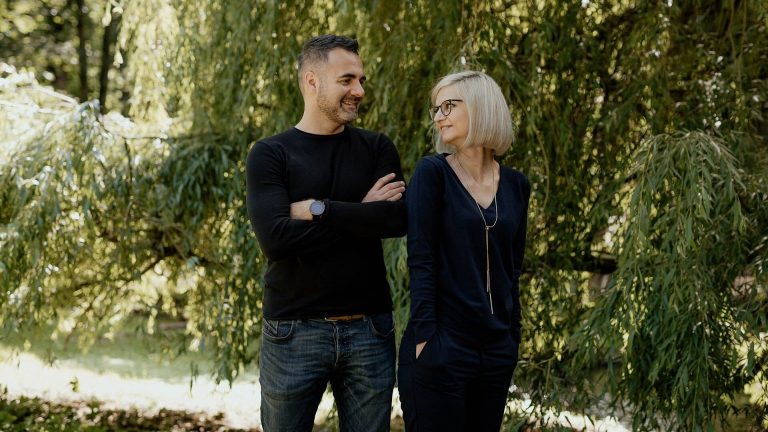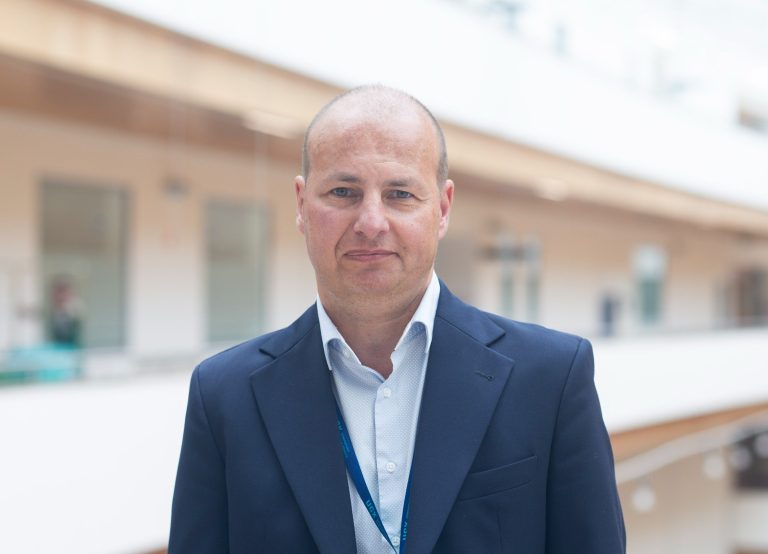Prof. Hus: More lymphoma patients will be curable. A condition for access to new medicines

The possibilities of using the most effective drugs in the treatment of lymphoma have improved significantly, but we are still waiting for the possibility of using several options – says Prof. Iwona Hus, head of the Hematology Clinic of the State Medical Institute of the Ministry of Internal Affairs and Administration.
Katarzyna Pinkosz, Wprost: What are the characteristics of lymphomas and what symptoms suggest the disease?
Prof. Iwona Hus: Lymphomas are cancers of the lymphatic system that primarily arise from lymphatic tissue. The most common symptoms of lymphoma are enlarged lymph nodes in the neck, axilla, inguinal, mediastinum or abdominal cavity. Cancer cells can be found throughout the body – in the skin, bones, abdominal cavity, central nervous system, and mammary gland.
Symptoms such as fatigue, fever, heavy night sweats, and significant weight loss – over 10% – may also occur. in the last 6 months (if the patient is not specifically trying to lose weight). Such symptoms indicate that the cancer is more advanced.
How is a lymphoma diagnosis confirmed?
The most important thing is to collect a lymph node (or other cancerous tissue) for examination. The standard procedure is to download the entire node. However, it sometimes happens that this is not possible, e.g. due to difficult access, when the lymph node is located in the abdominal cavity. Then a core needle biopsy can be performed. Another method is flow cytometry.
Once lymphoma is confirmed, imaging diagnostics must be performed to determine the advancement of the disease and whether the disease has spread.
Is it true that it is better to get lymphoma than any other cancer? What is the prognosis for lymphoma patients?
Lymphomas are a very diverse group of cancers with varying prognoses. In the case of aggressive lymphomas (e.g. DLBCL lymphoma, Hodkin’s lymphoma), it is very important to carry out diagnosis and start treatment as soon as possible.
The most common lymphoma is diffuse large B-cell lymphoma (DLBCL); it constitutes approximately 30 percent. all lymphomas. It is an aggressive cancer and must be treated quickly. Approx. 60 percent patients can be cured with first-line chemotherapy. The results are even better in the case of another aggressive lymphoma – Hodgkin’s lymphoma: in its case it can be cured up to 90%. patients.
The so-called indolent lymphomas; these include follicular lymphoma, marginal zone lymphomas, Waldenstrom’s macroglobulinemia. We treat these diseases only when specific indications appear. For example, follicular lymphoma – the second most common lymphoma – if diagnosed in the first stage, in some patients we can be cured thanks to radiotherapy or even after removal of the lymph node. However, if the disease is diagnosed at a more advanced stage, the patient will no longer be cured. However, sometimes we wait to start treatment until there are specific indications.
A lot has changed in the possibilities of using modern therapies in the treatment of lymphoma in Poland recently. Can we already say that the treatment we currently have is already at European level?
Definitely yes. When it comes to DLBCL, a lot has changed: there is reimbursement for CAR-T and other modern therapies, such as polatuzumab vedotin or tafasitamab – in resistant and relapsed forms of lymphoma. We see that more and more indications for CAR-T are being reimbursed in Poland, and in fact this therapy is being administered more and more often. Currently, in Europe, CAR-T therapy is already approved for first-line patients who are resistant to first-line immunochemotherapy or whose disease has relapsed within 12 months; There is no such treatment option in Poland yet.
We are also waiting for the possibility of using polatuzumab vedotin in the first line – such treatment significantly extends the time without symptoms of the disease. This is very important for all patients, but especially for patients with a worse prognosis. Such treatment extends the time until disease progression and increases the number of cured patients. An analysis recently presented at the last congress of the American Society of Hematology (ASH) showed that the use of this treatment in the first line will reduce by 34%. the need for second-line treatment within 10 years.
When it comes to Hodgkin’s lymphoma, the first line treatment is chemotherapy, which is very effective in most patients. However, last year there was an update of the ECHELON-1 study, which showed that adding an anti-CD30 antibody combined with a cytostatic (brentuximab vedotin) to the AVD regimen, i.e. a modification of standard ABVD chemotherapy, gives better results than chemotherapy in patients with advanced disease. . In Poland, this drug is already used, but in relapsed and resistant forms. The possibility of using such treatment in the first line would further increase the percentage of cured patients.
We are also waiting for changes in the treatment of follicular lymphoma. Currently, the first-line treatment is very good: a combination of obinutuzumab and chemotherapy. This regimen is effective in the vast majority of patients, but some do not respond to such treatment or recurrence occurs. We are waiting for the possibility of using a new bispecific antibody (mosunetuzumab) in the second line – currently the drug is in the reimbursement process. It is also worth mentioning mantle cell lymphoma – we have been waiting for a long time for the possibility of using ibrutinib in resistance and relapse (and the use of a BTK inhibitor was a condition for administering CAR-T). Currently, ibrutinib and CAR-T therapy are already reimbursed.
When we talk about lymphatic system cancers, it is also worth mentioning chronic lymphocytic leukemia. In patients in good condition, without poor prognosis factors, only immunochemotherapy is reimbursed in the first line, although research results show that greater benefits can be obtained with new drugs. The use of venetoclax and obinotuzumab in the first line prolongs the time to disease progression and reduces toxicity, including: at the risk of secondary cancers and infectious complications, as chemotherapy has a stronger immunosuppressive effect. The first-line ibrutinib plus venetoclax regimen is also in the reimbursement process. We are also waiting for the possibility of using zanubrutinib (a new generation BTK inhibitor), both in the first line and in the case of disease relapse. It is already possible in Poland to use this treatment in the case of Waldenstrom’s macroglobulinemia; in chronic lymphocytic leukemia not yet. It is a drug that is better tolerated than ibrutinib and has less toxicity.
So a lot has changed in the treatment of lymphoma, but there are still options to look forward to.






